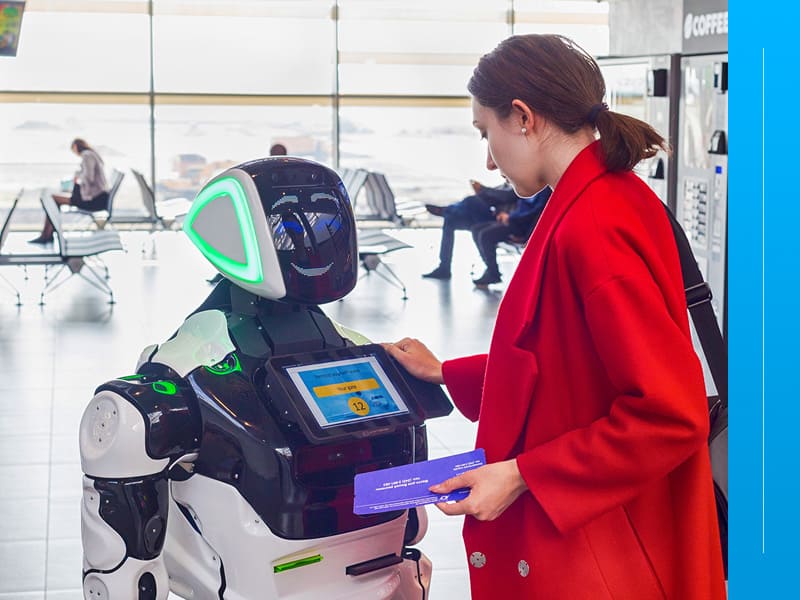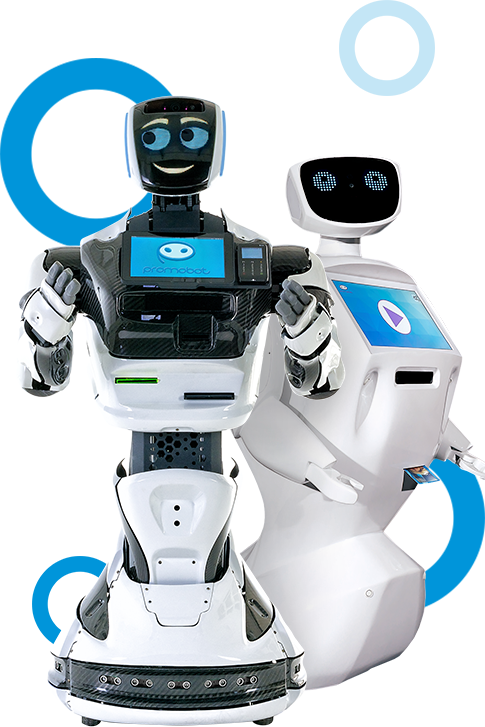Communication of
Promobot robots
Promobot can chat and engage in the conversation with any person on any topic via its linguistic database. There are three operating principles of Promobot’s linguistic database: first it’s speech recognition, then processing the question and then searching for the answer.

What is a linguistic base?

— Hello, robot

— Hello. My name is Promobot.

— Hello, robot

— It’s a nice day for a good conversation!
Rule is a set of a robot’s replies which it uses to answer specific phrases.
One rule can contain several replies, as with the “Hello, robot” rule above. It can also contain just one reply. For example, when a robot is asked about the bathroom and the bathroom location is always the same, the robot will always give directions to that same location.

How the linguistic database works
1. First level contains the robot’s responses to its workplace. This level is created individually for each client: “Where to find X?”, “How to buy X?”, “What discounts do you have?”, “Where is the departure gate?”, etc.
3. Third level is the search engine on the Internet. If Promobot can’t find an answer at first two levels, it starts to look for it on the Internet: «“What is a synchrotron?”, “Who is the president of Turkey?”, “Weather today”
It’s important to note that the robot uses only relevant sources, not the very first related piece of data found on the Internet.

— How much does it cost to parachute jump on Jupiter?

— I think it is expensive.

— Yadda yadda yadda.

— What you said here is cute.
Have you heard about our discount system?


— fgjhrkkflkhwrgwjfsml.

— Please repeat your request.
Additional phrases and options

— Robot, do you know who is [person’s name]?

— Yes. And I’d love to give this person some of our store’s flowers.
The basic questions system (called anchor system) allows to form complex dialogues for the robot – for example, sales scripts.
It is also possible to add videos or photos to the linguistic base, as well as assign a set of movements and emotions to the robot’s replies. Different promotional phrases can be used and pronounced randomly by the robot even when there’s no person to talk to. These phrases can also be assigned to specific users: varied by ages, genders, etc.




